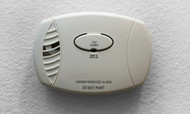What To Do When There Is Carbon Monoxide in a Garage
5th Mar 2024
Confined parking garages can accumulate carbon monoxide (CO) due to vehicle emissions that get trapped instead of being properly vented outdoors. Carbon monoxide is a colorless, odorless, and tasteless gas that can bind to hemoglobin in the blood more effectively than oxygen, disrupting oxygen transport and suffocating tissues at a cellular level. Exposure can lead to dangerous health consequences, including unconsciousness, irreversible brain damage, or even fatality, without the person ever detecting the lethal presence of CO.
Carbon monoxide detectors are critical for monitoring air levels. Learn what to do when there is carbon monoxide in a garage and how to minimize the risk of buildup.
Evacuate the Area
Evacuate people and animals immediately from the parking garage when carbon monoxide builds up. Direct individuals toward the nearest exits with clear, confident commands. Use loudspeakers or alarms, if accessible, to alert everyone in the vicinity. Trained and designated staff should guide and assist garage users to safe zones.
Evacuation prevents potentially fatal consequences. It also allows for emergency services to assess and neutralize the threat efficiently with the area cleared of people.
Turn Off Potential Sources
After ensuring all parking garage users are in a safe place, the next thing to do is turn off potential sources of carbon monoxide in the garage. Only those with the proper training and appropriate personal protective equipment (PPE) should attempt to find the source during an active leak. Before seeking the source, they will assess risks to ensure they do not place themselves in harm’s way inadvertently.
Locating potential sources may include examining common culprits like running engines, heaters, and any devices that burn fossil fuels. Carbon monoxide detectors also help by pinpointing areas with high levels of the gas.
Seek Medical Attention if Needed
People who believe they’ve been exposed to carbon monoxide and exhibit certain symptoms must seek medical attention. Be alert for symptoms like dizziness, headaches, and nausea. Delaying or avoiding medical attention after exposure to carbon monoxide can lead to severe, long-term health complications, including irreversible damage to the heart and brain.
If you or someone else is showing signs of carbon monoxide poisoning, act immediately and dial 911 or your local emergency number to receive prompt medical evaluation and treatment. Health professionals will administer the necessary interventions, such as oxygen therapy, to minimize the risk of long-term health effects.
Tips for Preventing CO Buildup
Preventing carbon monoxide buildup is key to ensuring the safety and well-being of everyone using the garage. Robust ventilation systems circulate air continuously, effectively diluting and displacing harmful carbon monoxide emissions.
Carbon monoxide detection systems for parking garages provide timely warnings, initiating preventive actions before gas levels become hazardous. Strategically place fixed CO detectors about five feet above the floor level. Ideally, you should install these detectors near the main sources of potential CO emission, such as near vehicle exhaust areas, to catch early signs of carbon monoxide buildup before it becomes a threat to health and safety.
Finally, regularly inform and train everyone who uses or works within the garage on the dangers of CO and the importance of following practices that minimize the risk of its accumulation. By educating and preparing individuals, you can ensure that everyone remains safe in the event of a carbon monoxide leak.
By following a clear evacuation protocol, shutting down potential CO sources, and securing prompt medical care for exposed individuals, garage owners and managers can mitigate the risks associated with this invisible threat. Moreover, adequate ventilation systems, CO detectors, and education can prevent carbon monoxide buildup and empower decisive emergency action.

